Migraine headache and hormonal contraception
Many factors must be considered before prescribing hormones to women affected by migraine.
©fesenko - stock.adobe.com

Table 1

Key points
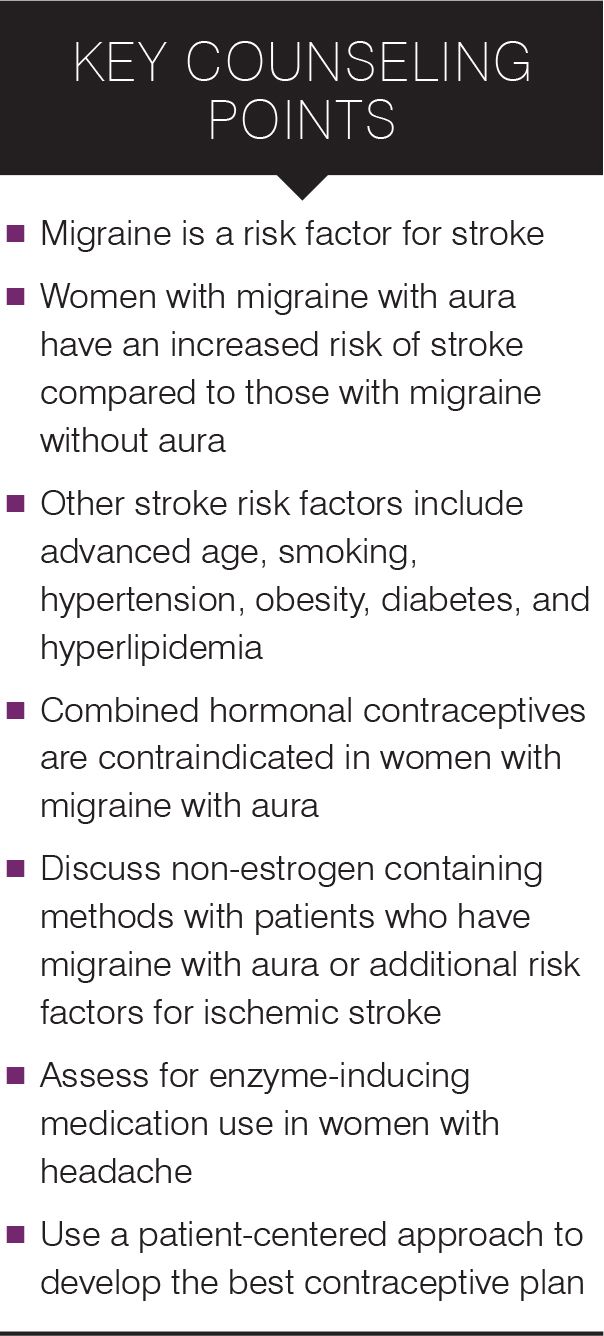
Table 2
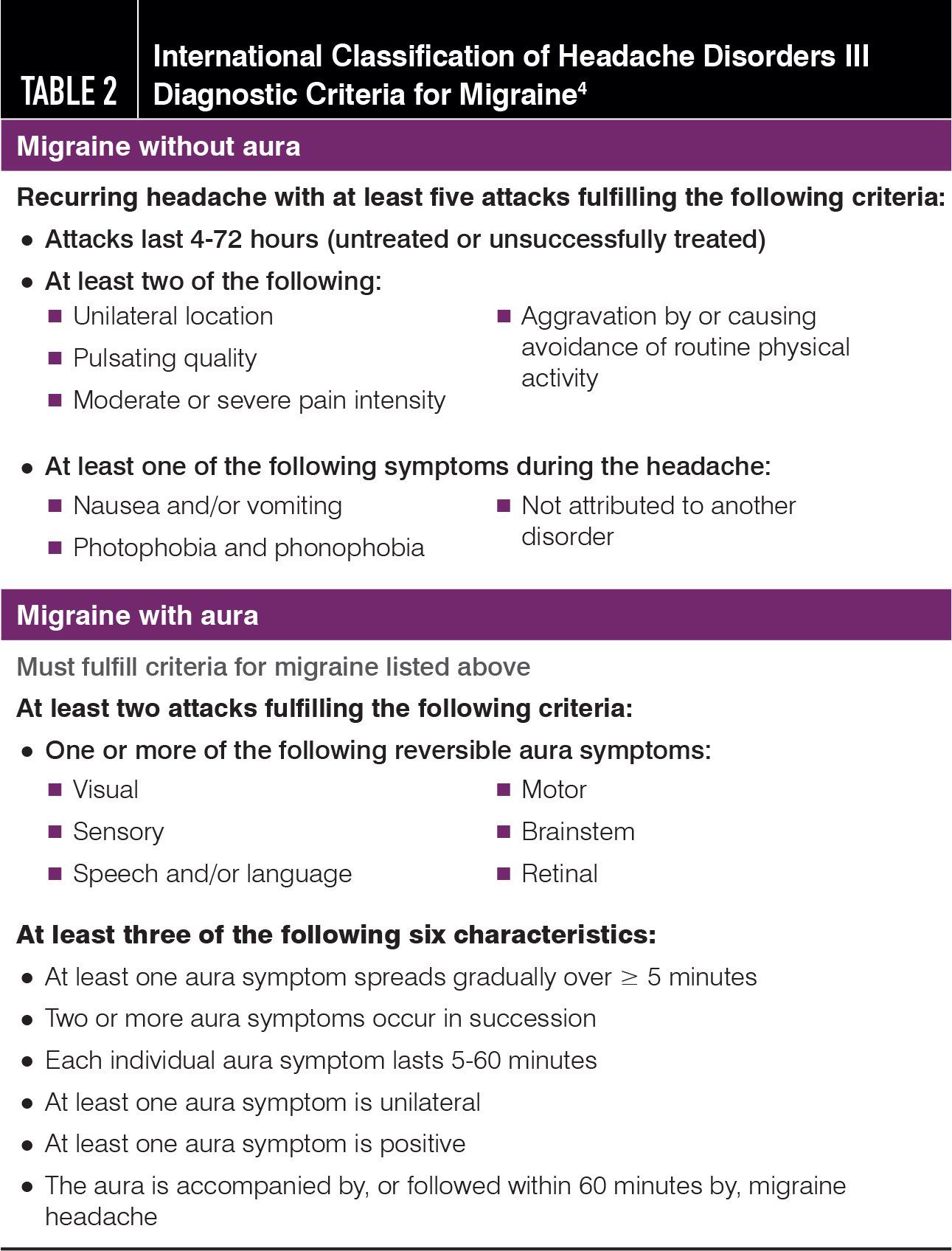
Table 3
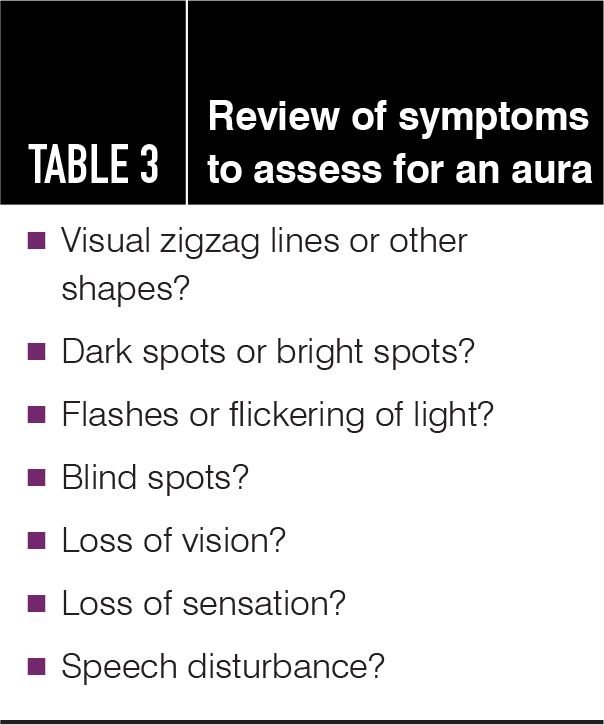
Women with no significant medical history have many medically appropriate forms of contraception from which to choose. The options narrow when counseling a woman with episodic or chronic health conditions such as headache disorders. Hormonal options are the most widely used forms of contraception among US women; over 40% of women aged 15 to 44 use hormone-containing forms of birth control, including the pill, intrauterine device, implant, injectable, ring, or patch.1 With up to 20% of reproductive-aged women affected by migraine, it is important for ob/gyns to understand the risks and benefits of contraceptive hormone use in this population.2
Migraine characteristics
Migraine must be distinguished from other types of headaches, such as tension-type headache, prior to contraceptive counseling (Table 1). Migraine headaches are diagnosed clinically and are classified as a recurrent disorder. The International Headache Society (IHS) provides diagnostic criteria for migraine using the the International Classification of Headache Disorders III criteria (Table 2).3 Migraine without aura is the most common subset of migraine, with a 1-year prevalence in women of 11%.4 Migraine with aura includes all of the outlined migraine criteria, with the addition of a variety of neurological symptoms that can occur immediately before or with onset of the headache. Aura symptoms are reversible and can include visual, sensory, speech, language, motor, brainstem, and retinal symptoms.3 Though less common, migraine with aura has a 1-year prevalence of 5% in females (Table 3).4
Case
A 27-year-old G1P1 presents for initiation of contraception. She has no significant medical history but on review of systems, reports experiencing headaches twice monthly. Prior to her headache onset, the patient sometimes sees shimmering lines and other shapes in her vision. Her headaches last 4 to 6 hours and she has associated nausea and occasional vomiting. The woman’s headaches resolve after she lies in a dark quiet room and sleeps. She has a 1-year-old son, is no longer breastfeeding, and would like to wait 1 to 2 years before another pregnancy, and is hoping to start combined hormonal oral contraceptive pills. Which of the patient’s symptoms would cause you to recommend against estrogen-containing contraceptive methods?
Stroke risk
Migraine
Migraine is a risk factor for ischemic stroke.5 Though the overall absolute risk of stroke in reproductive-aged women is low-between 3.5 and 19.0 per 100,000-migraine may be the only risk factor for stroke in younger women.6 Women older than 35 years are likely to have other classic risk factors for stroke, such as hypertension, diabetes, and hyperlipidemia that contribute more to stroke risk than migraine alone.7 Migraine with aura is associated with an elevated relative risk of stroke when compared to migraine without aura. A meta-analysis of 11 case control studies demonstrated that migraine with aura had a relative risk of 2.27 (95% CI, 1.61–3.19) for ischemic stroke, while migraine without aura had a relative risk of 1.83 (95% CI, 1.06–3.15).8 The overall stroke risk is still low, with only 3.8 additional cases of stroke per year per 10,000 women attributed to migraine with aura.9 A complete medical and social history can help elucidate all potential risk factors for stroke before contraception is prescribed.
In case you missed it: Migraine/stroke link more complex than originally thought
Hormonal contraception
The association between hormonal contraception and stroke risk is estrogen dose-dependent. It has been demonstrated that lower-dose estrogen-containing oral contraceptive pills (OCPs) (<50 ug ethinyl estradiol) are not independently associated with increased risk of stroke, but formulations with high levels of estrogen are.10,11 Use of the patch and ring also may result in an increased risk of stroke.11 Neither level nor type of progestin in combined OCPs appears to contribute to stroke risk.11,12 There is no evidence that progestin-only contraceptives increase risk of stroke and they are considered safe for use in women with stroke risk factors, including migraine with aura.13
Estrogen-containing hormonal contraception
In addition, use of combined hormonal contraception increases risk of stroke in women with any type of migraine. Multiple studies have indicated an increased odds ratio, ranging from 2 to 14, for ischemic stroke in women with migraine (not separated by subtype) who use combined hormonal contraceptives, as compared to women without migraine who use the drugs.14 Risk of ischemic stroke is further magnified in migraineurs who smoke and use combined hormonal contraceptives, with odds ratios ranging from 3.7 to 34.4.14 More recently, a meta-analysis of nine studies suggested that even women younger than age 45 who are migraineurs have an increased relative risk (3.6-7.0) of stroke when using combined hormonal contraception.15 However, much data supporting these findings do not reflect new formulations of OCPs. Because low-dose (20- to 30-μg of ethinyl estradiol) and ultra-low-dose (10- to 15-μg of ethinyl estradiol) formulations conceivably have less stroke risk, further research needs to be undertaken on these formulations.
When type of migraine is further delineated, it appears that the combination of migraine with aura and combined hormonal contraception maximizes risk of stroke. One study found risk of ischemic stroke to be increased by six-fold in women with migraine with aura on combined hormonal contraceptives compared to those without aura-demonstrating safety concerns when prescribing combined hormonal contraception in migraneurs with aura.16 Thus, assessment of migraine type when performing contraceptive counseling is a clinical necessity.
Table 4
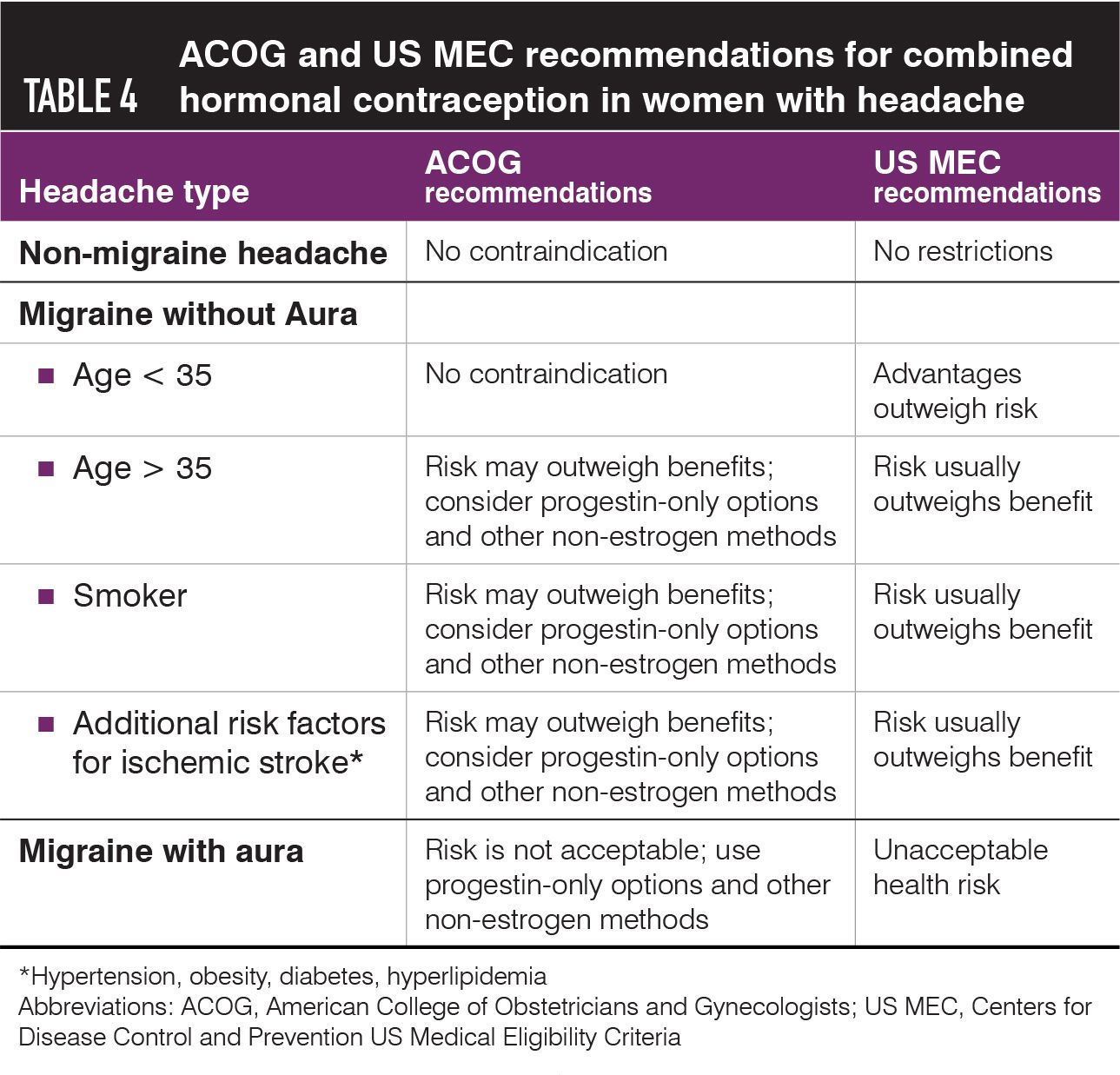
Recommendations
Given the increased risk of ischemic stroke in women with migraine with aura-and added risk when combined with hormonal contraceptive use-the American College of Obstetricians and Gynecologists (ACOG) and the Centers for Disease Control and Prevention (CDC) US Medical Eligibility Criteria (US MEC) have listed migraine with aura as an absolute contraindication to using combined hormonal contraception (Table 4).17-19 The US MEC is a helpful resource when providing contraceptive counseling services to women with a history of or existing medical conditions. The summary chart risk-stratifies different forms of contraception based on current and past medical conditions into four different categories. Categories 1 and 2 suggest that the advantages of the method usually outweigh the risk and that a method is safe. Category 3 suggests that the risks outweigh the benefits of using a contraceptive method. Category 4 indicates that there is an unacceptable risk to the patient. Common medical conditions used in the chart include headaches, hypertension, diabetes, and depression.
Combined hormonal contraception is acceptable in women with migraine without aura who have no additional risk factors for stroke.17-19 Moreover, ACOG’s recommendations are based on data using old formulations of combined hormonal contraception that include more than 35 µg of ethinyl estradiol (Table 4). Many of today’s popular formulations contain less than 30 µg of ethinyl estradiol and are not independently associated with stroke risk.
The International Headache Society has more lenient guidelines for use of combined hormonal contraception in patients with migraine with aura and recommends an individualized assessment of risk depending on the number of other risk factors a woman has for ischemic stroke (including age > 35, tobacco use, hypertension, obesity, diabetes, and hyperlipidemia). Per these guidelines, patients with migraine with aura who smoke should quit smoking prior to starting combined hormonal contraceptives and those with risk factors such as hypertension, diabetes, and hyperlipidemia should be treated for these conditions prior to starting combined hormonal contraceptives.14 Similarly, the American Headache Society indicates that use of low-dose estrogen-containing formulations can be individualized based on patient risks and benefits because the absolute risk of stroke is low.20
It is always important to compare the risk of unintended pregnancy in patients with chronic medical conditions with the risk of contraceptives. Patients should be adequately counseled and the discussion should be documented in the medical record.21 In all cases, once a woman with migraines has been started on a method of combined hormonal contraception, if her migraines worsen or she develops new-onset aura, the formulation should be discontinued.
Migraine medication interactions
During contraceptive counseling, it is important to consider possible medication interactions in women who have headaches. Many classes of medications are used for migraine prophylaxis, including beta blockers, calcium channel blockers, tricyclic antidepressants, and antiepileptic drugs (AEDs). Some AEDs specifically alter the efficacy of combined hormonal contraception through the Cytochrome P450 system. They act as P450 inducers and increase metabolism of contraceptive steroids. Topiramate is a commonly used migraine prophylaxis agent that also decreases efficacy of contraceptives by reducing the circulating dose of ethinyl estradiol. Specifically at doses > 200 mg daily, topiramate decreases efficacy of combined hormonal contraceptives, as well as of progestin-only pills and the progestin implant.22
Disclosures:
The authors report no potential conflicts of interest with regard to this article.
References:
- Kavanaugh ML, Jerman J. Contraceptive method use in the United States: trends and characteristics between 2008, 2012 and 2014. Contraception. 2018;97(1):14-21.
- Burch RC, Loder S, Loder E, Smitherman TA. The prevalence and burden of migraine and severe headache in the United States: Updated statistics from government health surveillance studies. Headache. 2015;55(1):21-34.
- Migraine - ICHD-3 The International Classification of Headache Disorders 3rd edition. ICHD. https://ichd-3.org/1-migraine/. Accessed July 13, 2019.
- MacGregor EA. Migraine and use of combined hor- monal contraceptives: a clinical review. J Fam Plann Reprod Health Care. 2007;33:159-169.
- Merikangas KR, Fenton BT, Cheng SH, Stolar MJ, Risch N. Association between migraine and stroke in a large-scale epidemiological study of the United States. Arch Neurol. 1997;54:362-368.
- Cruz-Herranz A, Illán-Gala I, MartÃnez-Sánchez P, Fuentes B, DÃez-Tejedor E. Recurrence of stroke amongst women of reproductive age: impact of and on subsequent pregnancies. Eur J Neurol. 2015;22(4):681-e42.
- Carolei A, Marini C, De Matteis G, The Italian National Research Council Study Group on Stroke in the Young. History of migraine and risk of cerebral ischaemia in young adults. Lancet. 1996;347:1503-1506.
- Etminan M, Takkouche B, Isorna FC, Samii A. Risk of ischaemic stroke in people with migraine: systematic review and meta-analysis of observational studies. BMJ. 2005;330:63-66.
- Kurth T, Slomke MA, Kase CS, Cook NR, Lee IM, Gaziano JM, et al. Migraine, headache, and the risk of stroke in women: a prospective study. Neurology. 2005;64:1020-1026.
- Petitti DB, Sidney S, Bernstein A, Wolf S, Quesenberry C, Ziel HK. Stroke in users of low-dose oral contraceptives. N Engl J Med. 1996;335:8-15.
- Lidegaard O, Lokkegaard E, Jensen A, Skovlund CW, Keiding N. Thrombotic stroke and myocardial infarction with hormonal contraception. N Engl J Med. 2012;366(24):2257-2266.
- Bousser M-G, Conard J, Kittner S, et al. Recommendations on the Risk of Ischaemic Stroke Associated With Use of Combined Oral Contraceptives and Hormone Replacement Therapy in Women With Migraine. Cephalalgia. 2000;20(3):155-156.
- World Health Organization Collaborative Study of Cardiovascular Disease and Steroid Hormone Contraception. Cardiovascular disease and use of oral and injectable progestogen-only contraceptives and combined injectable contraceptives. Results of an international, multicenter, case–control study. Contraception. 1998;57:315-324.
- Bartz D, O’Neal MA, Edlow AG. Contraceptive Options for Women with Headache Disease. In: Allen R, Cwiak C, eds. Contraception for the Medically Challenging Patient. New York, NY: Springer; 2014.
- Schürks M, Rist PM, Bigal ME, Buring JE, Lipton RB, Kurth T. Migraine and cardiovascular disease: systematic review and meta-analysis. BMJ. 2009;339:b3914.
- Champaloux SW, Tepper NK, Monsour M, et al. Use of Combined Hormonal Contraceptives Among Women With Migraines and Risk of Ischemic Stroke. Am J Obstet Gynecol. 2017;216(5):489.e1-489.e7.
- ACOG Committee on Practice Bulletins-Gynecology. Practice Bulletin ACOG. No. 73: Use of hormonal contraception in women with coexisting medical conditions. Obstet Gynecol. 2006;107:1453-1472.
- ACOG Practice Bulletin No. 206 Summary. Obstet Gynecol. 2019;133(2):396-399.
- CDC - Combined Hormonal Contraceptives - USMEC - Reproductive Health. Centers for Disease Control and Prevention. https://www.cdc.gov/reproductivehealth/contraception/mmwr/mec/appendixD.html#mec_neurologic. Accessed July 13, 2019.
- Migraine with Aura, Contraceptives and Stroke Risk - Systematic Review. American Headache Society. https://americanheadachesociety.org/news/migraine-aura-contraceptives-stroke-risk/. Accessed July 13, 2019.
- Calhoun AH, Batur P. Combined hormonal contraceptives and migraine: An update on the evidence. Cleve Clin J Med. 2017;84(8):631-638.
- Bialer M, Doose DR, Murthy B, Curtin C, Curtin C, Wang SS, Twyman RE, et al. Pharmacokinetic interactions of topiramate. Clin Pharmacokinet. 2004;43(12):763-780.
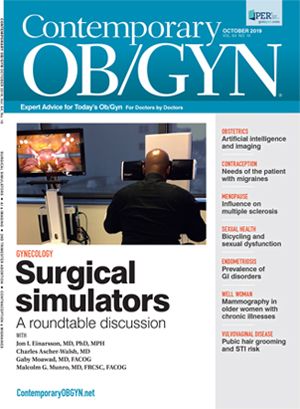
Intentional weight loss linked to lower mortality in postmenopausal women
March 11th 2025A recent study shows that intentional weight loss significantly lowers all-cause, cancer, and cardiovascular mortality risks among postmenopausal women, highlighting the importance of targeted weight management.
Read More
